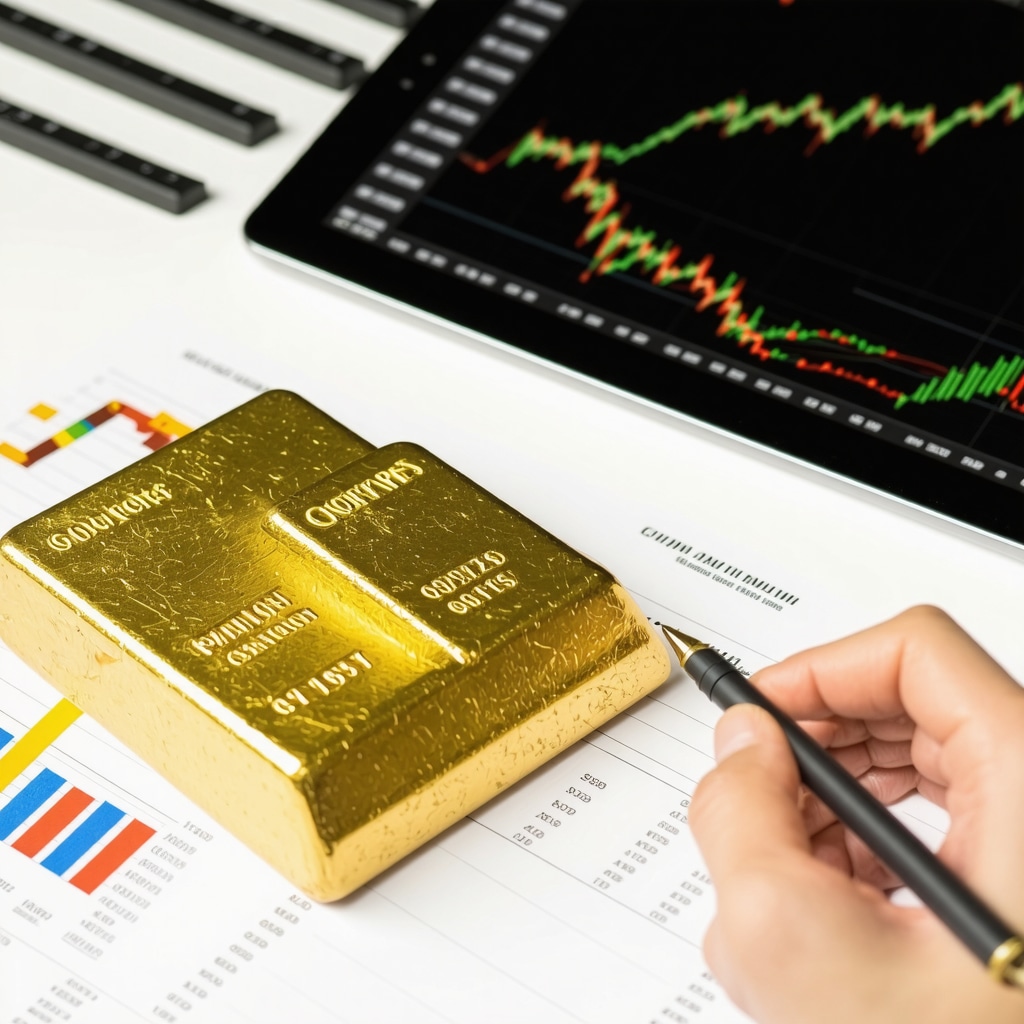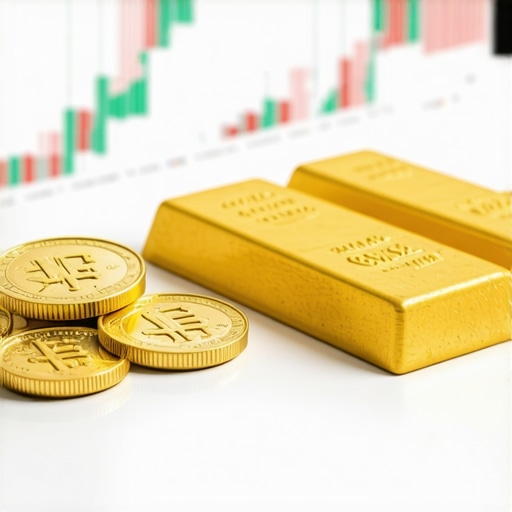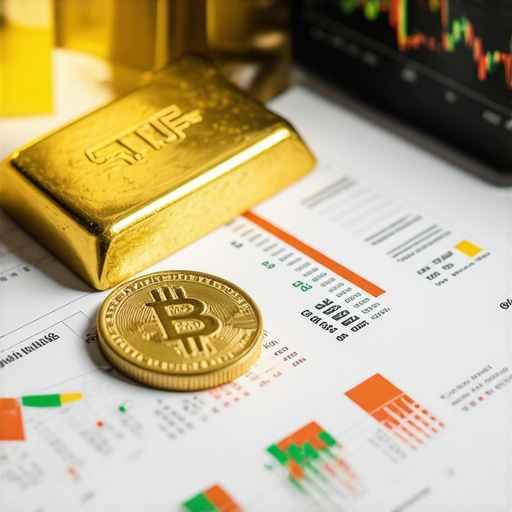Unlocking the Golden Dilemma: Choosing Between Gold Stocks and Gold ETFs
Investing in gold remains a timeless strategy to safeguard wealth, hedge against inflation, and diversify portfolios. However, the decision between purchasing gold stocks or gold ETFs often perplexes even seasoned investors. Both vehicles offer exposure to gold, but their characteristics, risk profiles, and return potentials differ significantly. Understanding these nuances can transform your investment approach and align it precisely with your financial goals.
Mining for Value: The Intricacies of Investing in Gold Stocks
Gold stocks represent ownership in companies that mine and produce gold. This exposes investors not only to the price of gold but also to operational risks, management efficiency, and geopolitical factors affecting mining operations. For example, a mining company facing production disruptions or regulatory hurdles may see its stock price fluctuate independently of gold prices. This complexity can lead to higher volatility but also presents opportunities for outsized gains if the company excels.
Moreover, gold stocks often pay dividends, adding an income component not available through direct gold ownership. However, investors must perform rigorous due diligence, examining financial health, debt levels, and mine reserves to avoid pitfalls. This approach suits those with a risk appetite for stock market dynamics and a keen interest in the mining sector’s fundamentals.
Gold ETFs: Seamless Access to Gold’s Stability and Liquidity
Gold Exchange-Traded Funds (ETFs) provide investors with a straightforward way to gain exposure to gold prices without owning physical gold or individual mining shares. ETFs typically hold physical gold bullion or gold futures contracts, offering liquidity and diversification. They trade like stocks on exchanges, allowing easy buying and selling throughout the trading day.
Investing in gold ETFs is ideal for those seeking stability and minimal management complexity. The expense ratios are generally low, but investors should remain aware of tracking errors — discrepancies between the ETF’s performance and actual gold prices. Additionally, ETFs eliminate company-specific risks inherent in gold stocks, focusing purely on the metal’s price movements.
How Do Gold Stocks and Gold ETFs Fit Different Investment Strategies?
Consider an investor aiming for capital appreciation via active trading and willing to accept volatility; gold stocks might align better given their leverage to operational success and market sentiment. Conversely, a conservative investor prioritizing wealth preservation and inflation hedging may find gold ETFs more suitable, appreciating their simplicity and direct gold price correlation.
For those interested in constructing a balanced portfolio, blending both gold stocks and ETFs can capture the growth potential of mining companies while maintaining the stability of physical gold exposure. This strategy is thoughtfully detailed in resources like how to create a balanced portfolio with gold ETFs and stocks, which offers practical guidance for diversification.
Expert Insight: Navigating Risks and Rewards with a Strategic Lens
Both gold stocks and ETFs are influenced by macroeconomic factors such as interest rates, currency fluctuations, and geopolitical uncertainty. For instance, rising inflation typically boosts gold prices, but mining stocks could be impacted differently based on operational costs. Investors should monitor global gold demand trends and central bank policies, as these significantly affect market dynamics, as analyzed by the World Gold Council and other leading financial institutions.
Weighing Costs, Taxes, and Accessibility in Your Gold Investment
Gold ETFs usually incur lower management fees than actively managed gold mutual funds or trading individual stocks. Additionally, ETFs provide ease of access through brokerage accounts without needing to handle physical gold’s storage and insurance concerns. Tax implications vary by jurisdiction, with capital gains treatment differing between stocks and ETFs, making consultation with a tax advisor crucial.
Meanwhile, gold stocks might require more active portfolio management and carry company-specific event risks, but they offer potential tax advantages if held within certain retirement accounts.
For investors eager to explore more about gold investment vehicles and how to tailor them to personal goals, the comprehensive guide to types of gold investments is an invaluable starting point.
Curious about the best approach for your portfolio? Share your thoughts or experiences with gold investing in the comments below — your insights enrich our community.
Source: World Gold Council, “Gold Demand Trends Q1 2024” (gold.org/research)
When Personal Experience Shapes Investment Choices
Over the years, I’ve noticed that my own preferences in gold investing have evolved alongside my changing financial goals and risk tolerance. Early on, I gravitated towards gold stocks because the idea of owning a piece of a mining company felt more tangible and exciting. I vividly recall one particular mining stock that surged after a company announced a new gold discovery. That thrill, however, came with heart-stopping dips when operational issues cropped up or market sentiment shifted abruptly.
Conversely, my more recent investments lean heavily toward gold ETFs. The ease of trading, lower fees, and the ability to quickly adjust my holdings during volatile periods have provided a sense of calm and control. I appreciate how ETFs remove the company-specific risks that once kept me awake at night, while still offering exposure to gold’s intrinsic value.
How Do You Weigh Flexibility Against Stability in Your Gold Investments?
This question often crosses my mind, especially when market conditions become unpredictable. On one hand, gold stocks offer the potential for outsized returns if you’re willing to stay informed and engage actively. On the other hand, gold ETFs provide a more hands-off approach with steady performance.
Thinking about this balance reminds me of insights shared by the World Gold Council, which highlights how global demand and central bank gold purchases can sway both gold prices and mining stocks differently, emphasizing the need for investors to understand these dynamics deeply (gold.org/research).
Embracing a Hybrid Approach: Lessons From my Portfolio
In practice, I’ve found combining gold stocks and ETFs creates a harmonious balance that suits my appetite for growth without sacrificing stability. This blend allows me to participate in the broader gold market’s upside while cushioning the impact of sector-specific shocks. If you’re curious about how to build such a portfolio, the guide on creating a balanced portfolio with gold ETFs and stocks offers practical strategies that I’ve personally found helpful.
Additionally, considering tax implications and management fees alongside your investment horizon can refine your choices further. For instance, I learned the hard way that different tax treatments on dividends from gold stocks versus capital gains on ETFs can significantly affect net returns depending on your country’s regulations.
What’s Your Gold Investment Style? Share Your Journey!
Have you leaned more towards gold stocks, or do you prefer the simplicity of ETFs? Maybe, like me, you’re experimenting with a mix? I’d love to hear about your experiences, challenges, and strategies in the comments. Sharing our journeys enriches this community and helps us all navigate the golden path more wisely.
Decoding Complex Market Signals: Leveraging Macro and Microeconomic Indicators in Gold Investing
Investing in gold stocks and ETFs isn’t just about tracking gold prices. To truly master these assets, investors must delve into a matrix of macroeconomic indicators—such as real interest rates, currency strength, and geopolitical tensions—and microeconomic factors like mining production costs, technological innovations, and corporate governance. For example, an unexpected shift in the U.S. dollar index can inversely impact gold prices, thereby affecting ETFs directly tied to bullion and mining stocks differently depending on their operational leverage.
Moreover, mining companies’ earnings reports often reveal nuanced information about cost pressures or efficiency gains, which might signal stock price movements independent of gold’s spot price. Monitoring these subtleties requires a sophisticated analytical framework combining fundamental and technical analysis.
How Can Sophisticated Investors Navigate the Volatility of Gold Stocks Versus ETFs in Inflationary Environments?
In inflationary phases, gold traditionally serves as a hedge, but the reaction of gold stocks and ETFs may diverge. Gold ETFs closely mimic bullion price movements, offering direct inflation protection. Conversely, gold mining stocks might suffer from rising input costs, labor shortages, or regulatory changes, potentially compressing margins despite higher gold prices. Investors need to assess operational resilience, leverage, and cost structures to anticipate these effects.
Utilizing derivative instruments like options on gold ETFs or mining stock futures can help advanced investors hedge downside risk or speculate on volatility. Additionally, incorporating macroeconomic models that factor in inflation expectations and central bank policy shifts can inform tactical asset allocation between these instruments.
Tax-Efficient Structures and Regulatory Considerations: Maximizing After-Tax Returns in Gold Investments
Tax treatment plays a pivotal role in net returns from gold assets, especially in jurisdictions with complex capital gains and dividend tax regimes. For instance, in the United States, gold ETFs structured as grantor trusts may be taxed differently than actively traded mining stocks, which might qualify for qualified dividend rates or be eligible for tax-loss harvesting strategies.
International investors must also consider withholding taxes, treaty benefits, and reporting obligations. Incorporating tax-efficient vehicles such as retirement accounts or exchange-traded notes (ETNs) can optimize after-tax performance. Consulting with experts who specialize in cross-border taxation and securities regulation ensures compliance and enhances investment outcomes.
Integrating ESG Metrics into Gold Mining Stock Selection: Aligning Returns with Responsible Investing
Environmental, Social, and Governance (ESG) factors are increasingly critical when evaluating gold mining stocks. Companies committed to sustainable mining practices, transparent governance, and community engagement often demonstrate better long-term operational stability and risk management. Incorporating ESG ratings and third-party audits into stock selection can mitigate reputational risks and align investments with ethical standards.
Conversely, gold ETFs may vary in their ESG integration, depending on the underlying assets and fund management philosophy. Some ETFs focus exclusively on mining companies with strong ESG profiles, while others track broader indexes without ESG screening. Investors seeking to blend financial returns with social responsibility must scrutinize fund prospectuses and third-party ESG assessments.
Harnessing Quantitative Models and AI to Forecast Gold Market Dynamics
Advanced investors increasingly utilize quantitative methods and artificial intelligence to forecast gold price trends and mining stock performance. Machine learning models trained on historical price data, macroeconomic indicators, sentiment analysis, and supply-demand metrics can uncover non-linear relationships and predictive signals that traditional analysis might miss.
Algorithmic trading strategies leveraging these insights enable opportunistic entry and exit points in both gold ETFs and mining stocks. However, model risk and overfitting remain concerns, necessitating continuous validation and integration with fundamental analysis.
For those eager to deepen their expertise, exploring resources like the World Gold Council’s Gold Demand Trends provides authoritative data and analysis to complement quantitative approaches.
Ready to elevate your gold investment strategy? Dive into specialized research, engage with expert communities, and experiment with hybrid approaches to harness both stability and growth potential in your portfolio.
Deciphering the Interplay of Monetary Policies and Gold Investment Performance
Monetary policies enacted by central banks worldwide wield profound influence over gold investment vehicles. Quantitative easing, interest rate adjustments, and currency interventions can alter gold’s allure as a safe haven asset. For example, an unexpected rate hike may strengthen the local currency, reducing the appeal of gold ETFs denominated in that currency, while simultaneously squeezing profit margins for gold miners due to higher financing costs. Sophisticated investors must therefore interpret central bank signals and economic indicators to time their exposure effectively.
Mitigating Volatility: Advanced Hedging Techniques for Gold Portfolios
Beyond traditional buy-and-hold strategies, advanced investors often employ derivatives such as options, futures, and swaps to hedge against price swings in gold stocks and ETFs. Utilizing put options on gold mining stocks can protect against downside risks during geopolitical turmoil or supply chain disruptions, while call options on gold ETFs allow for leveraged exposure with capped risk. Integrating these instruments requires a deep understanding of volatility indices and market sentiment to optimize risk-adjusted returns.
What Are the Best Quantitative Metrics for Evaluating Gold Mining Stocks Amidst Market Uncertainty?
Evaluating gold mining stocks demands a nuanced approach that transcends simple price correlations. Key metrics include cash cost per ounce, all-in sustaining costs (AISC), reserve replacement ratios, and free cash flow margins. Moreover, assessing a company’s hedging position against gold price fluctuations and its exposure to geopolitical risk zones is critical. These factors collectively inform a comprehensive risk-return profile, enabling investors to identify resilient companies capable of withstanding turbulent markets.
For an in-depth quantitative framework, the S&P Global Market Intelligence’s Gold Mining Analytics offers cutting-edge data and analytics tailored for expert investors.
Optimizing Portfolio Construction: Balancing Liquidity, Growth, and ESG Considerations
Constructing a gold portfolio that harmonizes liquidity needs, growth ambitions, and ethical benchmarks is an intricate endeavor. Incorporating gold ETFs with high liquidity facilitates nimble portfolio adjustments, while selective gold mining stocks offer growth through operational leverage and exploration upside. Overlaying ESG screening enhances long-term sustainability by prioritizing companies with robust environmental stewardship and governance practices.
This integrative strategy not only aligns with evolving investor values but also mitigates risks associated with regulatory penalties and reputational damage, which can materially impact stock performance in the gold sector.

Leveraging AI and Big Data to Anticipate Gold Market Sentiment Shifts
Recent advances in artificial intelligence and big data analytics have revolutionized sentiment analysis in commodity markets. Natural language processing algorithms sift through vast datasets comprising news articles, social media chatter, and financial reports to detect emerging trends that may precede price movements in gold ETFs and mining stocks. By integrating these insights with traditional fundamental analysis, investors can anticipate market sentiment shifts with greater precision.
However, reliance on algorithmic predictions demands robust backtesting and ongoing recalibration to avoid pitfalls of model overfitting or data bias.
Engage with the Next Frontier of Gold Investing
Embracing these advanced perspectives equips investors to navigate the multifaceted gold market landscape with confidence. Whether refining hedging techniques, integrating ESG principles, or harnessing AI-driven analytics, the path to superior gold investment outcomes lies in continuous learning and strategic innovation. Join our expert community to exchange insights, access exclusive research, and elevate your portfolio’s potential.
Frequently Asked Questions (FAQ)
What are the main differences between gold stocks and gold ETFs?
Gold stocks represent ownership in companies that mine gold, exposing investors to operational risks, company management, and geopolitical factors, while gold ETFs typically track the price of physical gold or futures, offering direct exposure without company-specific risks. Stocks may offer dividends and potential for higher returns but carry more volatility; ETFs provide liquidity, simplicity, and closer correlation to gold prices.
How does inflation impact gold stocks compared to gold ETFs?
Inflation generally boosts gold prices, benefiting gold ETFs directly as they track bullion prices. However, gold stocks can be affected differently since rising inflation may increase operational costs such as labor and energy, potentially compressing mining companies’ profit margins despite higher gold prices. Investors should evaluate miners’ cost structures and leverage when considering inflationary environments.
Can combining gold stocks and ETFs improve portfolio diversification?
Yes. A hybrid approach blends the stability and direct gold price exposure of ETFs with the growth potential and dividends of gold mining stocks. This diversification can help balance volatility and capture upside from operational successes in mining companies while maintaining a hedge against inflation and currency fluctuations through ETFs.
What advanced metrics should I analyze when evaluating gold mining stocks?
Key quantitative metrics include cash cost per ounce, all-in sustaining costs (AISC), reserve replacement ratios, free cash flow margins, and hedging positions. Additionally, geopolitical risk exposure and corporate governance quality are crucial to assess a company’s resilience to market uncertainties.
How do tax considerations differ between investing in gold stocks and gold ETFs?
Tax treatment varies by jurisdiction. For instance, in the U.S., gold ETFs structured as grantor trusts may have different capital gains tax implications than gold stocks, which might pay dividends subject to qualified dividend tax rates. International investors should consider withholding taxes and treaty benefits. Utilizing tax-advantaged accounts or instruments can optimize after-tax returns.
What role do ESG factors play in gold mining stock selection?
ESG criteria are increasingly important as companies with strong environmental stewardship, social responsibility, and governance practices tend to have better long-term operational stability and risk management. Incorporating ESG analysis helps mitigate reputational and regulatory risks and aligns investments with ethical standards. Some ETFs also integrate ESG screening in their holdings.
How can AI and quantitative models enhance gold market forecasting?
AI and machine learning models analyze vast datasets including historical prices, macroeconomic indicators, sentiment, and supply-demand trends to uncover predictive signals and non-linear relationships. This enables more nuanced forecasting of gold prices and mining stock performance, supporting tactical asset allocation and timing decisions when combined with fundamental analysis.
What hedging strategies are effective for managing volatility in gold investments?
Advanced investors use derivatives such as options, futures, and swaps to hedge downside risks or gain leveraged exposure. Put options on mining stocks can protect against operational disruptions, while call options on gold ETFs allow participation in price upside with limited risk. Effective hedging requires understanding volatility metrics and market sentiment dynamics.
How do monetary policies influence gold stocks and ETFs differently?
Central bank policies like interest rate changes and quantitative easing affect gold’s appeal as a safe haven. Rate hikes may strengthen currencies, reducing gold ETF attractiveness in that currency, while increasing financing costs for miners, impacting stocks’ profitability. Investors must interpret these signals to optimize exposure and timing in each asset class.
What should beginners know before investing in gold stocks or ETFs?
Beginners should understand that gold ETFs offer straightforward access to gold’s price movements with lower complexity and risk, while gold stocks involve company-specific risks and require more research. Starting with ETFs can build familiarity, then gradually adding select mining stocks can enhance growth potential. Always consider your risk tolerance, investment horizon, and consult financial advisors.
Trusted External Sources
- World Gold Council (gold.org) – Provides comprehensive research and data on gold demand trends, market drivers, and investment insights essential for understanding gold’s global dynamics.
- S&P Global Market Intelligence – Gold Mining Analytics – Offers advanced quantitative metrics and analytics on gold mining companies, enabling expert evaluation of operational and financial performance.
- International Monetary Fund (IMF) – Supplies macroeconomic data and analysis on monetary policies and currency fluctuations that influence gold markets worldwide.
- Harvard Business School – ESG Investing Research – Delivers academic and practical frameworks for integrating Environmental, Social, and Governance factors into investment decisions, relevant for gold mining stock selection.
- Financial Times and Bloomberg Commodities Sections – Provide up-to-date market news, expert commentary, and sentiment analysis crucial for timely gold investment decisions.
Conclusion
Deciding between gold stocks and gold ETFs involves weighing trade-offs between growth potential, risk, liquidity, and complexity. Gold stocks offer exposure to operational and company-specific factors with opportunities for dividends and capital appreciation, while gold ETFs provide simpler, more direct access to gold’s price movements and inflation hedging. Advanced investors benefit from integrating macroeconomic, microeconomic, ESG, and quantitative analyses to navigate volatility and optimize portfolio construction. Employing hybrid strategies and leveraging AI-driven insights can further enhance returns and risk management. Ultimately, aligning your gold investment choices with your financial goals, risk tolerance, and tax considerations is paramount. We invite you to apply these expert perspectives, share your experiences, and explore related content to refine your golden investment path with confidence and sophistication.










